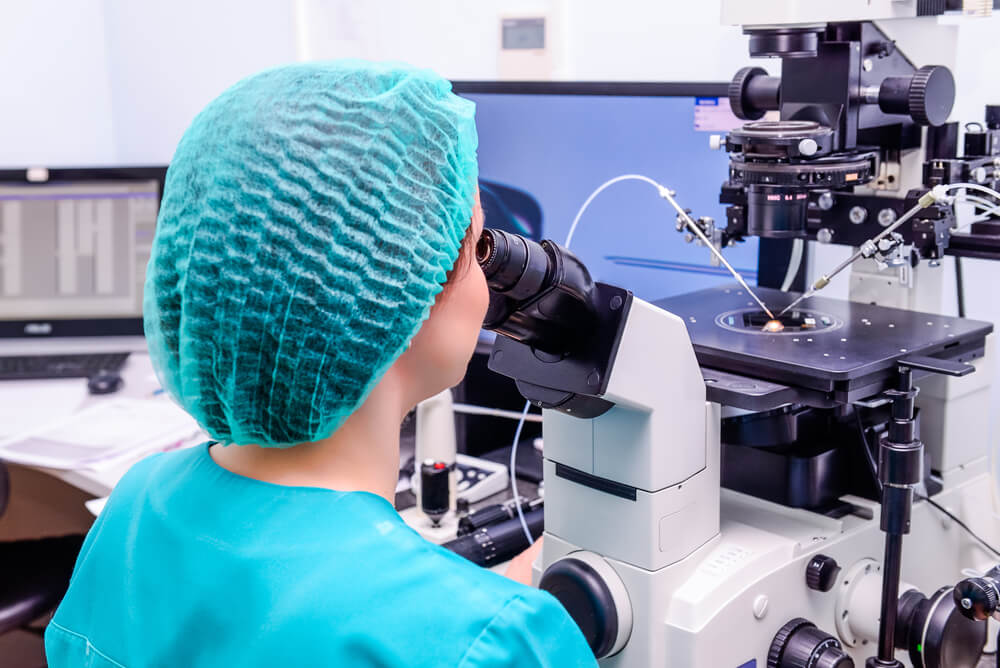What Is In Vitro Fertilization?
IVF, or in vitro fertilization, is a method that is used to help women with fertility, the development of the embryo, implantation, and prevention of any possible genetic issues. People wonder very often what is in vitro fertilization because the name itself does not resonate with anything we have heard before.
IVF is generally one of the most known approaches when it comes to assisted reproductive technology, and it is actually a series of procedures, not just a one-off treatment method. The way it works is that by combining medicine and surgery, doctors work on the fertilization of the egg and the implantation of the fertilized egg into the womb.
The process of fertilization of the eggs, when they are retrieved from the ovaries, occurs in a lab, and afterward, the egg, i.e., embryos are inserted into the uterus. This whole process takes from around three weeks to three months, but if each individual step takes longer, the entire IVF procedure is longer.
There are different fertility clinics that help women go through the IVF procedure, with different degrees of success. Women’s Care of Bradenton is a clinic that offers IVF services to patients, ensuring that the procedures are as successful as possible and the patients are supported and guided throughout the whole process.

IVF ABCs
In the following part of today’s article, we will discuss in more detail what IVF entails, what are the exact steps, what to expect, and what can be the potential benefits and risks of the procedure itself.
When talk about the reasons why patients go through the IVF procedure, there are several, but the common thread is that a person cannot get pregnant naturally. IVF is used as a treatment method for infertility and certain genetic issues. When the issue is infertility, there are experts advising patients first to try some other methods, apart from IVF, such as fertility drugs or intrauterine insemination, because IVF can be quite invasive and expensive.
IVF is primarily offered to women over 40 and to patients who have particular health issues such as:
- fallopian tube damage, which makes it hard for the egg to be fertilized and travel to the womb
- issues with ovulation when it is not frequent, or it does not occur at all
- endometriosis, where the uterine lining grows outside of the uterus
- fibroids which can cause issues with the implantation of the egg
- tubal sterilization, which is done to prevent pregnancy permanently
- issues with the production of sperm and its function
- infertility without an apparent cause
- genetic disorders which can be passed from the parent to the child
- preservation of eggs before a health condition treatment such as cancer
- dysfunctional uterus, which poses pregnancy as a health risk
Many of these conditions are a good baseline for IVF, but it is essential to discuss them with your chosen doctor and see the most suitable option for you. Different fertility clinics offer various consultations and solutions, so make sure to pick the best one for you.
The process has several steps, as already mentioned, and it starts with taking medication for a certain period to ensure that the eggs are mature enough and prepared for fertilization. This process is named ovulation induction, and usually, women have regular ultrasounds and blood testing to check their hormone levels and egg production progress.
When there are enough mature eggs, the doctor starts the egg retrieval process, i.e., removes the eggs from the body. The egg retrieval process is considered a minor surgery, but it is done at your fertility clinic or the doctor’s office.
During the egg retrieval process, the patient gets a medicine that helps them relax and feel more at ease during the procedure. With the help of an ultrasound, the doctor takes a thin tube and inserts it through the vagina to reach the ovary. The inserted tube, which is connected to a suction device, pulls the eggs from the follicles which hold them, and in this way, the eggs are harvested for lab work.
When the eggs reach the lab, they are mixed up with selected sperm cells from the partner or another donor, and this process is called insemination. The egg is stored together with the sperm in a container, and the process of fertilization occurs. When the egg is fertilized, the cells inside divide and become embryos. This is closely monitored by lab staff to make the process as successful as possible.

The fertilization might take three to five days, and afterward, the embryos are inserted back into the patient’s body or, to be more precise, in the womb. This process is called embryo transfer, and the egg is inserted through the cervix into the womb via a thin tube. This means that the embryo, i.e., the fertilized egg, is directly placed in the uterus for the process of attachment of the embryo to the uterine lining.
It is advised to take a rest day after the embryo transfer. Women very often take pills or daily shots of progesterone to support embryo development in the uterus. As with any other procedure, IVF also brings specific side effects such as bloating, cramping, constipation, tenderness of the breasts, vaginal discharge in the form of bloody fluid, mood swings, headaches, bleeding, infection, allergy to medication, and alike.
It is also important to mention that in vitro fertilization can be very emotionally and mentally exhausting for both the patients and their partners. Commonly, the first attempt at IVF does not work, and the patient needs to go through another one, which is both financially and emotionally consuming.
Consulting your doctor is crucial when it comes to IVF, but also talking to other people who have gone through the process and have different types of experiences. Support is very important, and it can be found on many different sides. In some countries, IVF is not part of general medical insurance, and it can cost a lot to go through this process. Make sure you get all the necessary information before deciding on IVF.
Certain risks are present when it comes to IVF, and below you can find a short list:
- premature delivery
- low birth weight
- multiple births
- ovarian hyperstimulation syndrome
- complications with the egg retrieval procedure
- miscarriages
- ectopic pregnancies
- congenital disabilities
- cancer
- excess amounts of stress
Contact Us!
Although very effective and one of the most popular solutions for infertility, IVF has disadvantages and requires support mechanisms. If you decide whether to go through the IVF procedure, contact our clinic and our expert team, and let them help you figure out the best solution for you and your particular needs. Our team is ready, so call us!


